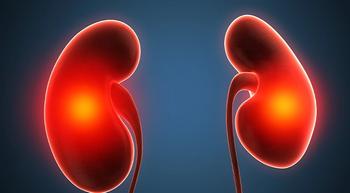
Pancreatic Cancer Basics, From Diagnosis to Treatment
Key Takeaways
- Pancreatic cancer is mostly pancreatic ductal adenocarcinoma, with late-stage detection due to non-specific symptoms like jaundice and abdominal pain.
- Diagnosis involves imaging tests, biopsies, and blood tests to confirm cancer presence, stage, and guide treatment planning.
For patients with pancreatic cancer, this is a guide to the basics you need to know about this disease.
Pancreatic cancer occurs when cells in the pancreas, an organ nestled behind the stomach, grow out of control. The pancreas has two primary functions: to produce digestive enzymes that help break down food and to create hormones, such as insulin, that manage blood sugar. The vast majority of pancreatic cancers, about 95%, are pancreatic ductal adenocarcinoma, which begins in the cells lining the ducts that carry digestive enzymes.
Pancreatic cancer can be difficult to detect early because symptoms often don't appear until the disease is advanced. When symptoms do occur, they can be vague and include jaundice (yellowing of the skin and eyes), upper abdominal or back pain, unexplained weight loss, loss of appetite and fatigue. Risk factors include smoking, diabetes, a family history of pancreatic cancer, obesity and chronic pancreatitis.
Diagnosis
The diagnostic process involves a series of tests to confirm the presence of cancer, determine its stage and guide treatment planning.
Common Diagnostic Tests
- Imaging Tests: These provide detailed pictures of the pancreas and surrounding areas.
- CT scans (computed tomography) and MRIs (magnetic resonance imaging) are frequently used to visualize the tumor's size and location.
- Endoscopic Ultrasound (EUS) involves inserting a flexible tube (endoscope) down your throat into your stomach and small intestine. An ultrasound probe at the end of the tube creates images, and the physician can use EUS to guide a needle for a biopsy to obtain a tissue sample.
- PET scans (positron emission tomography) can help identify if the cancer has spread to other parts of the body.
- Biopsy: A biopsy is the definitive way to diagnose cancer. A small sample of tissue is removed from the tumor and examined under a microscope.
- Blood Tests: These may include tests to check liver function (which can be affected by a tumor blocking a bile duct) and tumor markers, such as CA 19-9, though this marker alone is not used for diagnosis.
Treatment Options
Treatment for pancreatic cancer depends on the tumor's size and location, whether it has spread (the stage of the cancer) and your overall health. Treatment is often a combination of therapies.
Surgery
Surgery is the only curative option for pancreatic cancer and is possible only if the cancer is localized and has not spread to major blood vessels or distant organs. These tumors are called resectable.
- Whipple Procedure (Pancreaticoduodenectomy): This is the most common surgery for tumors in the head of the pancreas. It involves removing the head of the pancreas, the duodenum (first part of the small intestine), the gallbladder and part of the bile duct.
- Distal Pancreatectomy: Used for tumors in the body or tail of the pancreas, this procedure removes those parts, often along with the spleen.
For tumors considered borderline resectable or locally advanced, chemotherapy and/or radiation may be given beforesurgery (neoadjuvant therapy) to shrink the tumor and increase the chance of successful surgical removal.
Medical Therapies
- Chemotherapy: This uses drugs to kill cancer cells, stop their growth or slow their spread. It can be given intravenously or by pill. Chemotherapy is often given after surgery (adjuvant therapy) to reduce the risk of recurrence, or as the primary treatment for cancers that cannot be surgically removed or that have spread.
- Radiation Therapy: This uses high-energy X-rays or other particles to kill cancer cells. It is often combined with chemotherapy and may be used to shrink tumors before surgery or to manage symptoms like pain.
- Targeted Therapy: These drugs focus on specific abnormalities in cancer cells. They are generally used in combination with chemotherapy for patients whose tumors have particular genetic changes.
- Immunotherapy: This treatment harnesses the body's own immune system to fight cancer. It is currently being explored in clinical trials and is an option for a small subset of pancreatic cancers with specific genetic markers.
- Cancer Vaccines: Vaccines are currently being explored as a treatment option for patients with pancreatic cancer, with data released this fall showing that the off-the-shelf
vaccine ELI-002 7P elicited strong mKRAS-specific T-cell responses in 89 out of 90, or approximately 99%, of evaluable patients with pancreatic cancer.
Side Effects of Treatment
It's important to discuss the potential side effects of your specific treatment plan with your oncologist, as they can vary greatly.
Common Side Effects
- From Chemotherapy and Radiation:
- Fatigue: Feeling unusually tired is common and can be severe.
- Nausea and Vomiting: Medications can often control these symptoms.
- Diarrhea or Constipation: Changes in diet and medication can help manage these issues.
- Neuropathy: Numbness, tingling or pain in the hands and feet.
- Changes in Blood Counts: Lowered white blood cells (increased risk of infection), red blood cells (anemia) and platelets (bruising/bleeding).
- From Surgery:
- Pancreatic Insufficiency: Inability to produce enough digestive enzymes, often managed with enzyme replacement pills.
- Diabetes: The pancreas's ability to produce insulin may be impaired, requiring insulin therapy.
Note: Always report new or worsening symptoms to your care team promptly. They have strategies and medications to help manage these effects.
Incidence Among Younger Adults
While pancreatic cancer is most commonly diagnosed in people over the age of 65, the incidence in younger adults is a rising concern. Recent data suggests an increase in the diagnosis of pancreatic cancer, often referred to as early-onset pancreatic cancer, in people younger than 55.
- What the Data Shows: Studies have shown that rates of pancreatic cancer have risen significantly in the youngest age groups (ages 15-34).
- Potential Factors: The reasons for this trend are under investigation but may include rising rates of obesity, Type 2 diabetes and possibly changes in other lifestyle and environmental factors. Some of the increased detection in younger adults is attributed to less aggressive tumor types, such as neuroendocrine tumors, but the overall trend warrants continued research and awareness.
If you are a younger patient, your oncologist may discuss genetic testing to screen for inherited risk factors.
Conclusion
A pancreatic cancer diagnosis is a serious challenge, but you are not alone. Your oncology team is your partner, and this guide serves as a starting point for informed conversations with them. Be proactive: ask questions about your specific diagnosis, the goal of each treatment and how potential side effects will be managed. Understanding your disease and your options is crucial to navigating your cancer journey.
Reference
- “Vaccine Elicits Immune Responses in Pancreatic Cancer,” CURE;
https://www.curetoday.com/view/vaccine-elicits-immune-responses-in-pancreatic-cancer
Editor’s Note: This guide is designed to be a starting point. Your personal experience will be unique. By using this information as a foundation for your discussions, you can partner with your oncologist to make the best decisions for your health.
For more news on cancer updates, research and education,





